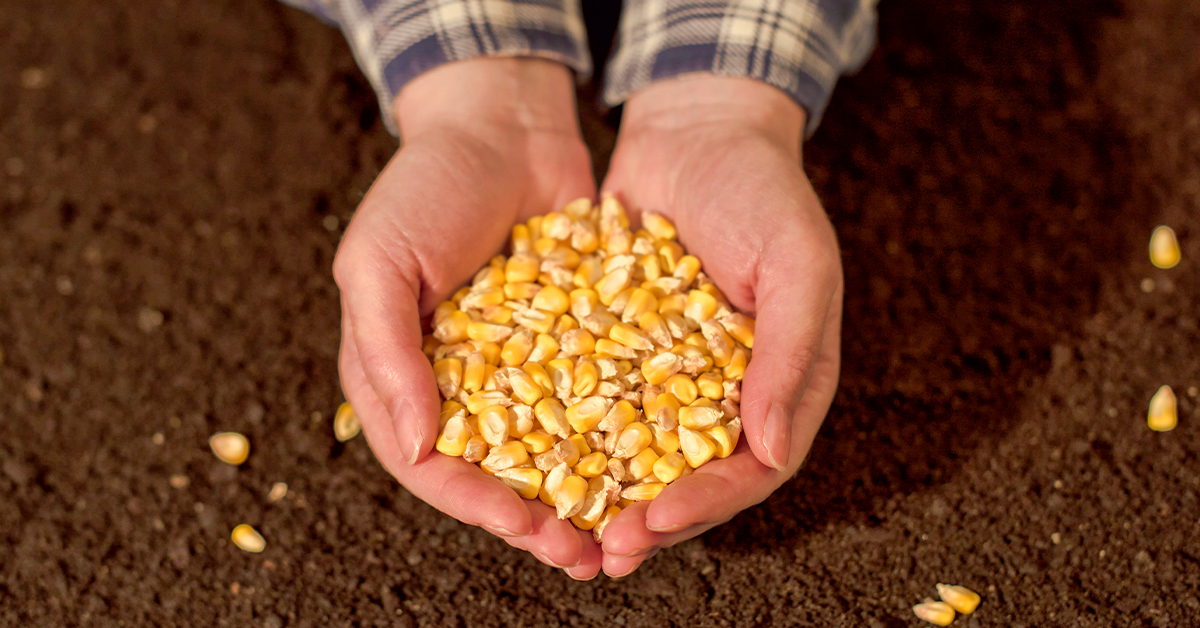
Have you ever complained about the price of alfalfa seed? Would you rather buy $3/lb. alfalfa seed or $5/lb. alfalfa seed? Wait! What if the $5 seed would give you ¼ of a ton per acre increase per year for the life of the stand? It’s time to do some math.
Cost vs Returns
We will use the highest generally recommended seeding rate of 20 lb. per acre, a moderate alfalfa price of $120/ton, and a 5 year stand life.
- $3.00/lb. seed x 20 lb. seed/acre= $60/acre
- $5.00/lb. seed x 20 lb. seed/acre= $100/acre
- $100-$60 = $40/acre difference in seed cost
Averaging $120 per ton for your hay, you only have to gain 1⁄3 of a ton per acre over the life of the stand to break even.
If you were to get ¼ of a ton yield increase each year, and I have seen this and more from high-quality varieties over average or poor ones, that would be an increase of 1.25 tons per acre over the 5 years. That Is a gross value of $150 per acre, or a net value of $110 per acre over the life of the stand. Now the most expensive seed is not always the best, but it would probably pay dividends to be more concerned about the performance of a seed variety than what it costs.
The Importance of Genetics in Corn Production
Genetics are arguably the most valuable tool we have in driving quality yield in any crop. From 1866 to 1935, corn yield in the U.S. was stagnant at around 30 bushels per acre. From 1935 to 1955, a moderate increase to 40 bushes per acre was seen. Then, sometime around 1956, a movement known as the “green revolution” began taking effect. This was a massive effort to improve the breeding and overall genetic quality of crops. Since 1956, the national average corn yield has soared to 180 bushels per acre.
Corn is a crop where the seed represents a significant cost of production. So what kind of things should be looked at to make sure every dollar spent on that seed comes right back home with friends? My recommendation is to know what you’re trying to do and what your problems are, then focus on the traits that will get what you need.
Important Seed Characteristics
I will highlight a few of the more important things to consider, but seed companies will have measurements on dozens of different characteristics, and it is easy to get a seed catalog to compare them all.
Strong Emergence
Fast, and more importantly, uniform emergence will have a profound impact on corn yield.
Insect Resistance
Bugs are everywhere, and if you can get a corn that takes care of them without having to run a sprayer through your field, that is worth a lot. The three insects that resistance is usually bred for are corn borer, corn rootworm, and corn earworm. You may not need to pay for top of the line resistance on all of these. In the Western U.S., corn borer has not been much of a problem, but may become more of an issue in the future. If you are planting corn year after year in the same field (corn on corn), strong rootworm resistance will be some-thing you will want. Corn earworms cannot survive past a central Utah Winter, but they migrate north into Idaho every year. Their damage can be as severe as the top inch of the cob being eaten. So, for our area, you probably want to focus more rootworm and ear worm control, but don’t waste money on corn borer control
Disease Resistance
In the arid west, we do not usually have problems with foliar diseases, but if you have a soil disease like Fusarium, resistance can be invaluable.
Dry Down
I’ve seen more and more farmers look at growing grain corn. In our shorter growing season in the Intermountain West, it can be hard to get the corn to dry down. Look at hybrids that have a faster dry down or look at using a dryer.
Drought Resistance
Yes, there is a difference. If you have all the high quality water you need, then super. Don’t worry about it! If you don’t, or you’re planting in a field with higher salt levels, perhaps you should find a hybrid with the ability to handle the drier conditions.
Enogen
Enogen is a new trait that has been developed by Syngenta that incorporates an enzyme into the corn. Though it has only been on the market for three years, the results so far have been very impressive on improving digestibility. If you plan on feeding your corn to your own animals, especially if they are dairy cows, you need to look at this as a way of improving digestibility in your feed.
Ask An IFA Agronomy Expert
Genetics are incredible, and we should use the tools that are available to our advantage. If we don’t, we will be losing yield every day of the growing season. Whether your looking for custom grain and seed or have have any question, stop by your local IFA Country Store or reach out to an IFA agronomist in your area.
Our team of agronomy experts are happy to help you select and grow the right seed for your operation.
Browse IFA's popular agronomy products
Written by Braydon Johnson, IFA Agronomy Sales Consultant, and originally published in the IFA Cooperator magazine (vol. 86, no. 4) Winter 2020.

